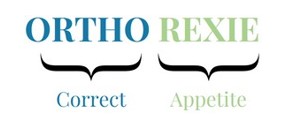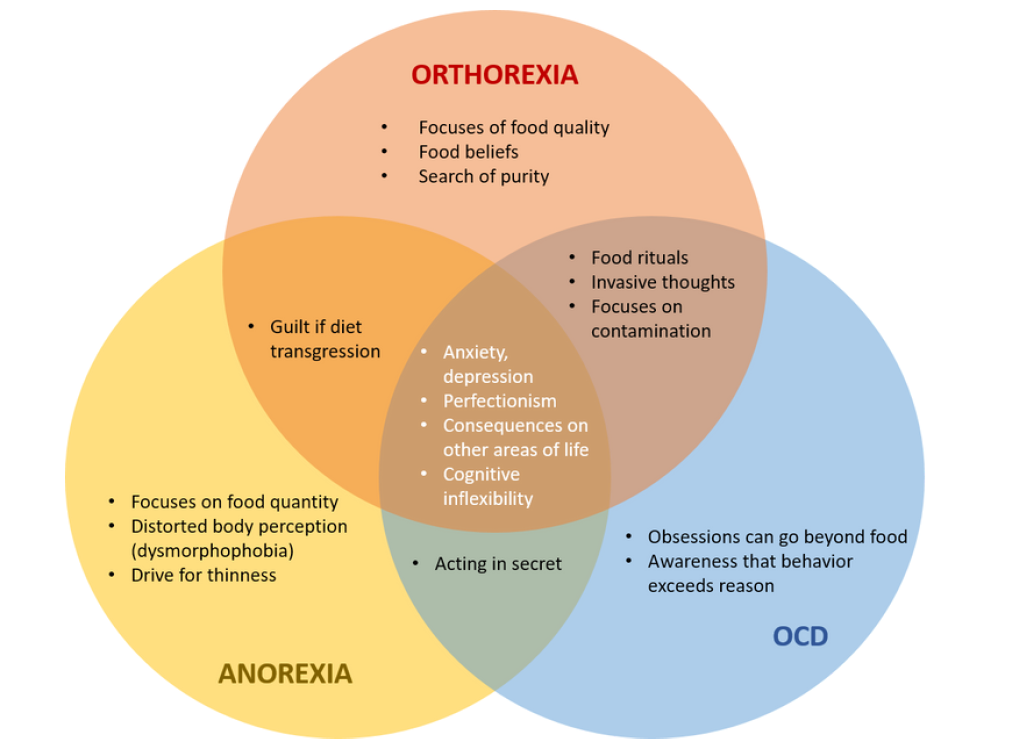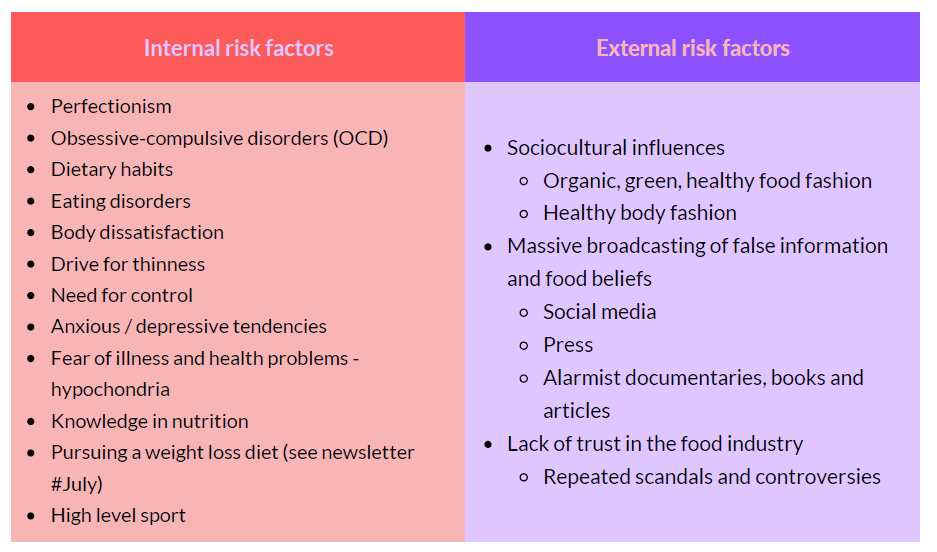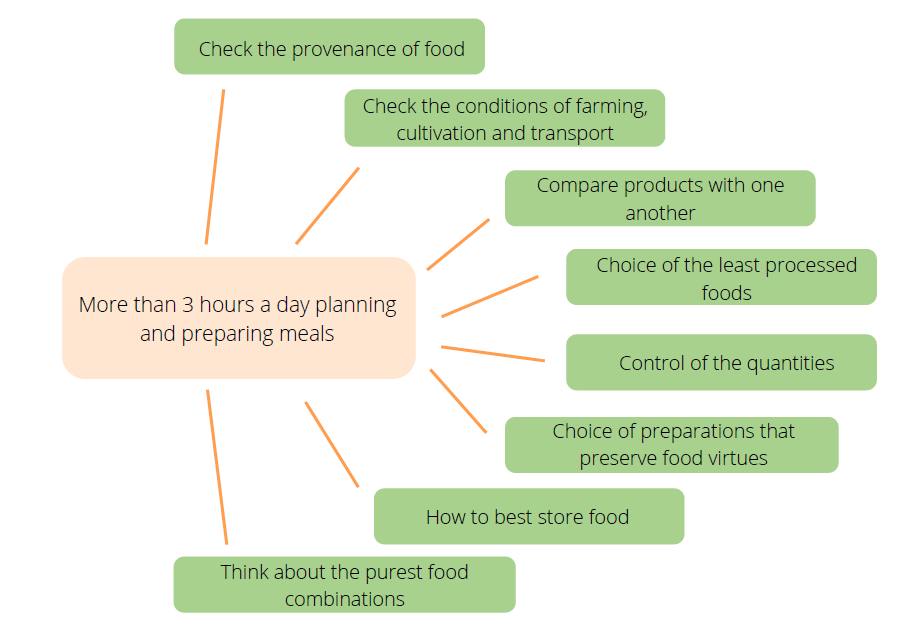Orthorexia
Source : Nutriactis/Rouen-Normandie hospital
Summary
- Introduction
- Definition
- When healthy eating becomes pathological
- The onset of orthorexia
- How does orthorexia express itself?
- Physical dangers of orthorexia
- How to manage orthorexia?
Introduction
With today’s globalization, intensive farming, fishing and cultivation, more and more people want to return to a healthier, unprocessed and sustainable diet. The search of a perfectly healthy diet, entirely avoiding junkfood, industrial food and all processed foods (pesticides, additives, etc.) can lead to the development of food phobias.
Today’s consumer is torn between the desire for a balanced diet, and a lack of trust in the sanitary quality of the products found in supermarkets.
Thus, the obsession related to food quality characterizes a disorder called orthorexia.
Definition
Orthorexia can be defined as the obsession with eating healthy food. It expresses itself through an excessive concern for food quality and its effects on the body, to the expense of the quantities ingested, sensations about eating and even taste preferences.

People with orthorexia explain their behavior as the surch of a form of purity (1). Orthorexia thus leads to the exclusive consumption of foods considered as “pure” (untreated, unprocessed) and the exclusion of foods considered as “impure” (processed, industrial, risky). The person with orthorexia categorizes food products mainly based on their own beliefs, founded on subjectif arguments, and not scientific ones, for example : no gluten, only raw foods, exclude cow’s milk, no additives, etc.
This classification leads to the total avoidance of many foods, even entire food families for some people.
When healthy eating becomes pathological
At what point does the quest for a balanced diet become pathological?
The scientific litterature has established that a behavior can be considered as pathological from the moment it induces any significant distress or suffering, and has repercussions on other important areas of daily life (social, professional, hobbies, etc.) (2)
Balanced diet
- Intending to eat a balanced diet whenever possible
- Eating a balanced diet with respect to the health recommendations but being capable of flexibility
- Limiting the consumption of certain food products without excluding them completely
- Allowing oneself pleasure food and treats
- Allowing oneself holiday meals, restaurants, etc…
- Food is not the only priority
- The balanced diet is not at the expense of other areas of daily life
- Eating remains a pleasant moment
- Self-esteem is independent of the diet
Orthorexia
- Strict adherence to the self-imposed diet
- Lack of flexibility
- Prefering fasting rather than breaking diet
- Total exclusion of certain foods or food families considered “impure”
- Diet transgressions are a source of guilt, anxiety and even self-punishment (1,3)
- Food is the only priority
- Food is the main concern
- The diet imposed is to the expense of other areas of daily life
- Social isolation
- Total loss of the pleasure of eating
- Self-esteem is dependent on the diet
- Source of suffering
By definition, orthorexia cannot be qualified as an eating disorder (ED). However, it shares commonalities with anorexia nervosa, which is an ED. Furthermore, it has been shown that similarities also exist between orthorexia and obsessive-compulsive disorders (OCD) (1) :

The onset of orthorexia
There are several factors that can contribute to the development of orthorexia: these risk factors can be internal (emanating from the individual) or external (emanating from the environment) (1, 3, 4, 5)

How does orthorexia express itself?
In practical terms, orthorexia can result in many different behaviors depending on the individual. Here is a non-exhaustive list of the symptoms of orthorexia (1) :

Expressions of orthorexia:

Physical dangers of orthorexia
Orthorexia, especially through the implementation of numerous rituals, causes a significant decrease in the quality of life but it can also have serious consequences on the physical and mental health of the patient:

How to manage orthorexia?
We recommend, above all, that you contact a health professional who will be able to help you and accompany you in your behavioral change (general practitioner, dietician, etc.)
If you feel that you have strict dietary requirements, and that your diet has become too demanding, there are several exercises that can help you reintroduce flexibility into your diet (6).
- Listen to yourself: take the time to pay attention to your sensations about eating
- Mindful eating: relearn to appreciate food by using your 5 senses when eating
- Let go: try to eat without questioning the benefits or harms of food, and without controlling the quantities
- Accept your cravings: a few treats will not interfere with your dietary balance!
Reintroducing foods that were removed from your diet may seem daunting at first, but it takes several tries and perseverance! Keep in mind the reasons why you decided to change and return to a more relaxed diet, and don’t get discouraged.
Conclusion
Orthorexia is an increasingly common disorder in today’s society because it is partly driven by societal concerns and influences, which often revolve around both food and body health.
It is essential to remember the importance of the pleasure of eating, which is an essential part of a wellbalanced diet. As the expression says, “Healthy mind dwells in a healthy body”; indeed, food pleasure and its associated benefits should not be neglected to contribute to a healthy body.

-
Orthorexia
pdf – 409 KB
 You might be interested in these articles
You might be interested in these articles